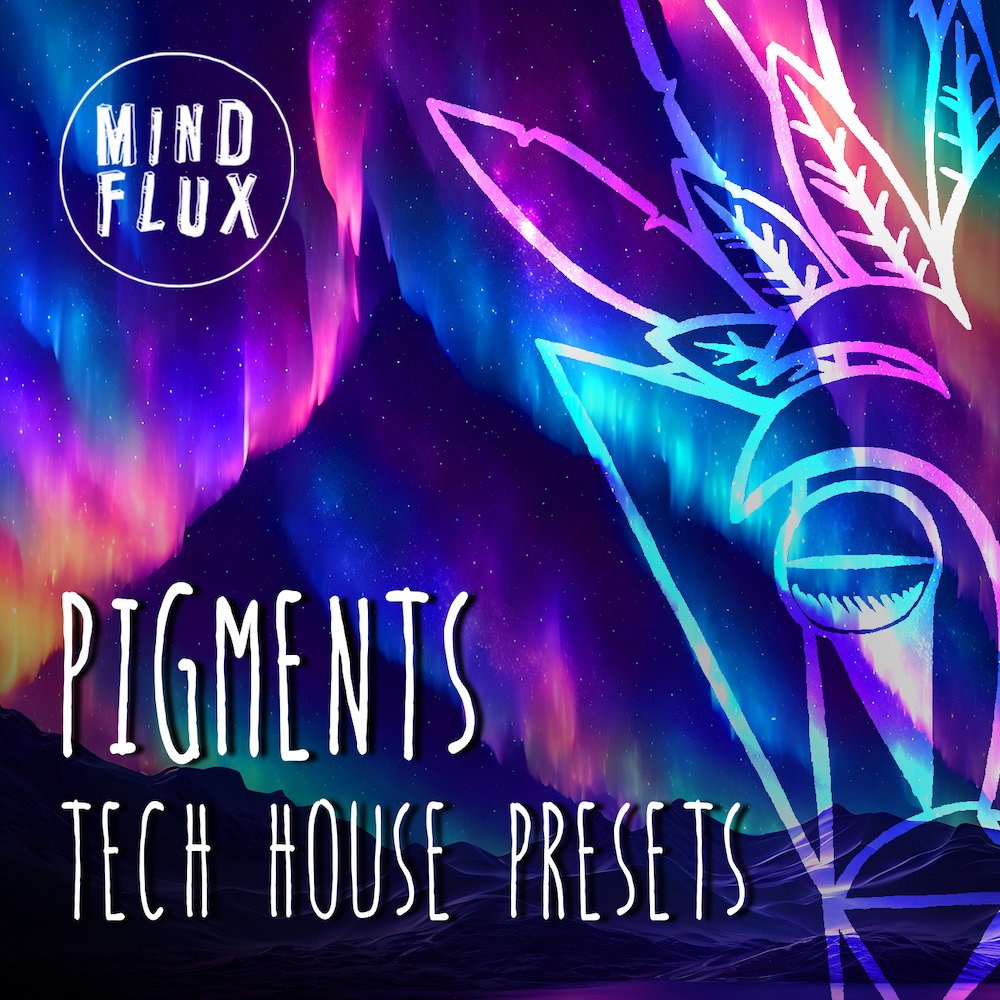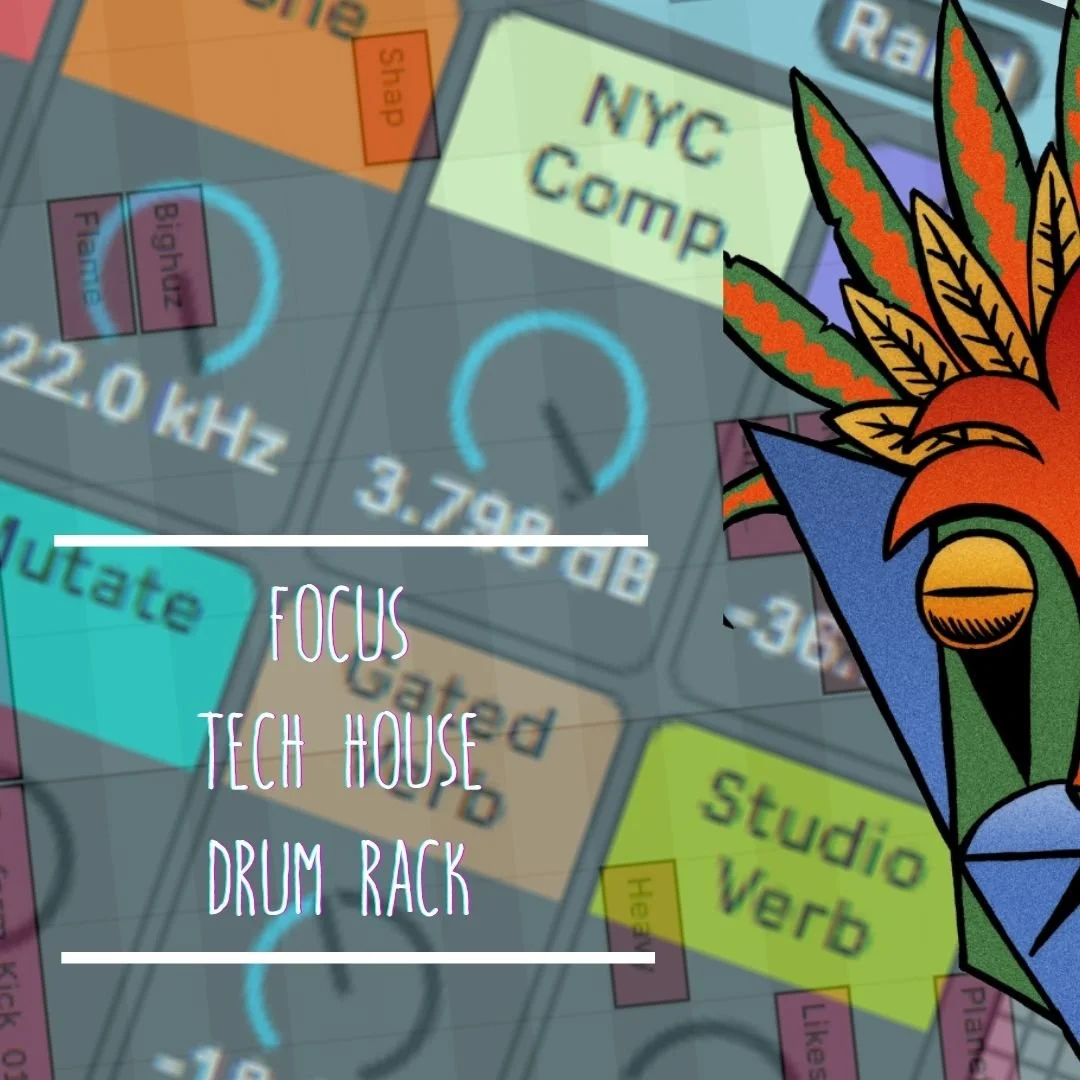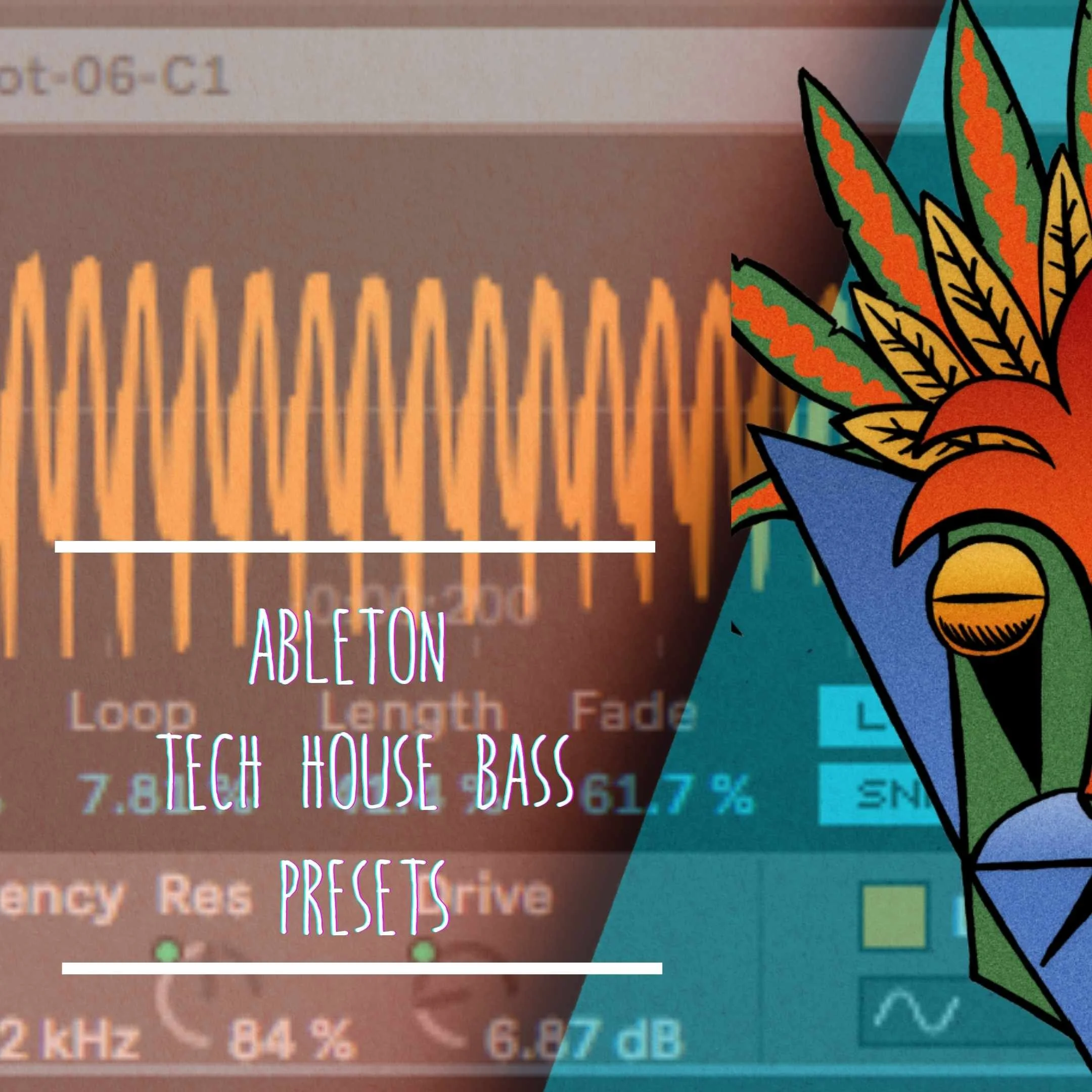The Retro Tech Bass Resurgence: A Deep Dive into "Pump Up The Jam" (Nightfunk Remix)
Inspired by the iconic track "Pump Up The Jam" and its modern remix by Nightfunk, we delve into the art of crafting the perfect retro tech bass sound using u-he Diva.
Introduction: The world of electronic music is no stranger to the cyclical nature of trends. As the saying goes, "what's old becomes new again." The resurgence of retro tech bass sounds in contemporary tracks is a testament to this enduring adage. Nightfunk's remix of the classic "Pump Up The Jam" stands as a shining example, seamlessly blending nostalgic vibes with modern production techniques. In this guide, we'll dissect the elements that make up this signature bass sound and how you can recreate it using the u-he Diva synthesizer, ensuring that you too can infuse your tracks with the soulful groove of retro tech bass.
MIDI Programming & Rhythmic Patterns
In the realm of electronic music, the bassline is the heartbeat of any track, and its creation is a meticulous process that combines rhythm, melody, and technology. The "Pump Up The Jam" (Nightfunk Remix) stands as a masterclass in MIDI programming, showcasing a bassline that's both a nod to the past and a step into the future. Let's dive into the rhythmic patterns and MIDI techniques that give this track its infectious groove and how you can apply these principles to your own productions.
Off-Beat Placement: The essence of a groove lies in its rhythm, and the off-beat placement of notes is a time-honored technique to get listeners' feet moving. In this remix, the bassline pulses on the off-beats, creating a syncopated rhythm that's the hallmark of dance music. It's this clever placement that injects the track with its signature danceability.
Primary Note - A#: The choice of A# as the primary note is no accident; it serves as the gravitational center of the bassline, around which all other notes orbit. This tonal anchor is crucial for providing the track with a sense of musical grounding and consistency.
Quarter Bar Fill: The end of each bar brings a moment of anticipation, a musical cue that something new is about to happen. The rhythmic fill that jumps to C# and then back to A# adds a delightful twist, keeping the groove fresh and the listener's attention locked.
Final Fill with Legato Slide: The sequence's finale is a flourish that showcases the fluidity of electronic bass. The legato slide from E to F isn't just a transition; it's a statement, adding a layer of funk and sophistication to the bassline. This subtle yet impactful touch is what separates a good bassline from a great one.
By understanding and implementing these MIDI programming nuances, you can bring a level of professionalism and polish to your basslines that will resonate on dance floors and in listeners' memories.
Oscillator Dynamics: Crafting the Sound's Core
The oscillator section of a synthesizer is where the alchemy of sound creation begins. It's here that waveforms are chosen and shaped, forming the raw materials that will become the signature elements of your track. In the pursuit of the quintessential retro tech bass sound, as exemplified by Nightfunk's remix of "Pump Up The Jam," understanding oscillator dynamics is key. Let's explore the foundational waveforms and their interplay that give this genre its distinctive sonic footprint.
DCO Type: The DCO's role in synthesizer architecture is a balancing act between the precision of digital control and the warmth of analog sound. This hybrid approach is essential for achieving a bass sound that is both consistent in tuning and rich in harmonic texture. It's the starting point for a bassline that feels both modern and steeped in the tradition of classic dance music.
Osc 1: The Square Waveform: The square wave is a cornerstone of electronic bass sounds, beloved for its directness and harmonic richness. It's the sound that underpins many of the classic basslines we've come to recognize, providing a warmth and depth that harkens back to the golden era of dance music. When crafting a retro tech bass, the square wave is often the first port of call, laying down the fundamental character of the sound.
Osc 2: The Sawtooth Waveform: The sawtooth wave is the perfect complement to the square, bringing with it a full spectrum of harmonics that fill out the sound. When layered an octave below the square wave, it adds a substantial bottom end, ensuring the bass is felt as much as it is heard. This combination of waveforms is a classic recipe for a bass sound that is both full-bodied and capable of cutting through a mix with clarity and presence.
By carefully selecting and combining these waveforms, you can engineer a bass sound that not only pays homage to the classics but also carries the weight and authority required for contemporary productions. It's a dance between history and innovation, where each oscillator plays its part in creating a bassline that resonates with the soul of retro tech.
Filtering for Character: Sculpting the Sound
In the hands of a skilled producer, the filter section becomes a tool of transformation, shaping the raw, electronic timbres into sounds with depth and personality. For those seeking to recreate the warm, enveloping basslines found in tracks like Nightfunk's remix of "Pump Up The Jam," understanding the nuanced role of filtering is essential. Let's delve into how the Cascade filter in Diva can be wielded to chisel out a bass sound that's both retro and resonant.
Type: The Cascade Filter's Analog Soul
The Cascade filter, a gem within Diva's arsenal, is a tribute to the iconic filters that graced vintage analog synths. It's not just a tool for cutting frequencies; it's a character actor, imbuing your bass with the kind of warm, resonant quality that gives it a living, breathing presence in your track. This filter type is the secret sauce that can make a digital bassline feel as though it's emanating from an instrument with decades of stories to tell.
Cutoff: The Delicate Balance of Warmth and Clarity
Setting the cutoff at the midpoint is a strategic move, a balancing act that allows the bass to assert its dominance without stepping on the toes of the mix's higher frequencies. It's about restraint and understanding that sometimes, less is more. By rolling off the top-end just enough, you allow the bass to sit comfortably in the mix, providing a solid foundation without overshadowing the other elements.
Resonance: Adding Character One Peak at a Time
A touch of resonance at the cutoff point is like adding a pinch of spice to a dish—it enhances the flavors already present and introduces a new dimension to the taste. In sonic terms, this slight peak brings out a defining characteristic in the bass, highlighting a frequency that makes the sound pop. It's these subtleties that can turn a good bass sound into a memorable one, giving it a signature that listeners can latch onto.
Env Amount: Bringing the Bass to Life
The envelope's influence on the filter is what gives the bass its dynamic contour, its narrative arc from the moment a note is played to its decay. At a moderate setting, the envelope adds a gentle push and pull to the sound, giving it a sense of movement and life. It's this modulation that ensures the bass is more than just a static, monotonous presence; it's an active participant in the rhythmic dance of your track.
By mastering the interplay of these filter settings, you create more than just a bassline; you craft an experience. The filter becomes your chisel, and with each adjustment, you're sculpting a sound that has the potential to define a genre, to become the heartbeat of a dancefloor anthem.
Envelope Shaping: Narrating the Sound's Story
The envelope of a synthesizer is the unsung hero that shapes the narrative of your sound. It's the subtle rise and fall, the crescendo and diminuendo that give life to the notes you play. In the context of a bassline, especially one inspired by the pulsating groove of "Pump Up The Jam" (Nightfunk Remix), the envelope settings are the difference between a bass that merely thumps and one that breathes and moves with the rhythm.
Attack: An immediate attack ensures the bass sound starts right when a note is played, essential for rhythmic precision in basslines.
Decay: A setting of 36 allows the sound's volume to drop at a controlled rate, ensuring the bass doesn't overpower but remains present.
Sustain: At 33, this ensures the sound maintains a consistent energy level while a note is held, crucial for longer notes or when a groove requires it.
Release: A release time of 37 ensures the sound doesn't end too abruptly, allowing for smoother transitions between notes.
In essence, the envelope settings are your tools for dictating the rhythm and flow of your bassline. They allow you to craft a bass that not only supports the groove but also tells its own story, one that's felt in the feet and the soul of every listener.
Pro Tips for a Polished Sound: The Finishing Touches
The journey from a good bassline to a great one is paved with the nuances and subtleties that only the discerning ear can perceive and perfect. It's in these finishing touches that a sound transcends the ordinary, achieving that polished sheen of a professional production. This section is dedicated to those final, critical adjustments that can elevate your bass sound, ensuring it not only fits the mix but enhances it, providing that quintessential feel of a track that's been touched by a master's hand.
Bit-Crushing: This digital effect emulates the sound of vintage samplers and early digital synths. By introducing a touch of bit-crushing, you can add a vintage digital edge, reminiscent of early electronic music gear. It's a great way to introduce character and a nostalgic vibe to your bass.
Channel EQ: The bass frequencies are the backbone of any track. By using a channel EQ to carefully boost the lower spectrum, you accentuate the bass's natural warmth and depth. This ensures the bass has a fuller and more resonant presence in the mix, especially on systems with pronounced bass response.
Saturation: One of the secrets to a warm and full bass sound is saturation. By adding a touch of saturation, you introduce harmonic overtones that enrich the sound, making it feel warmer and more analog. Tools like tape saturation or tube emulation plugins can be particularly effective for this purpose.
Subtle Compression: Compression can help even out the dynamics of your bass, ensuring it remains consistent throughout the track. A gentle ratio with a medium attack and release can help glue the bass, making it punchier and more present in the mix.
Stereo Widening (with Caution): While bass sounds are typically centered in the mix, a touch of stereo widening on the higher harmonics can add depth and space. Be cautious, though; too much widening can cause phase issues. Always check your mix in mono to ensure compatibility.
Layering with Sub Bass: For tracks that need to hit hard on club systems, consider layering your main bass sound with a clean sub-bass. This ensures the low end remains powerful and defined, especially in large sound systems.
Transient Shaping: If you're looking for a bass sound that cuts through the mix, transient shapers can be your best friend. By emphasizing the initial attack of the bass, you can make it more pronounced and rhythmically impactful.
Conclusion: Recreating iconic bass sounds is more than just a technical exercise; it's a journey into the past, understanding the essence of what made those sounds timeless. With tools like u-he Diva and the techniques outlined above, you're well-equipped to breathe new life into classic sounds. Embrace the past, innovate for the future, and let your tracks resonate with the soul of retro tech bass.






























